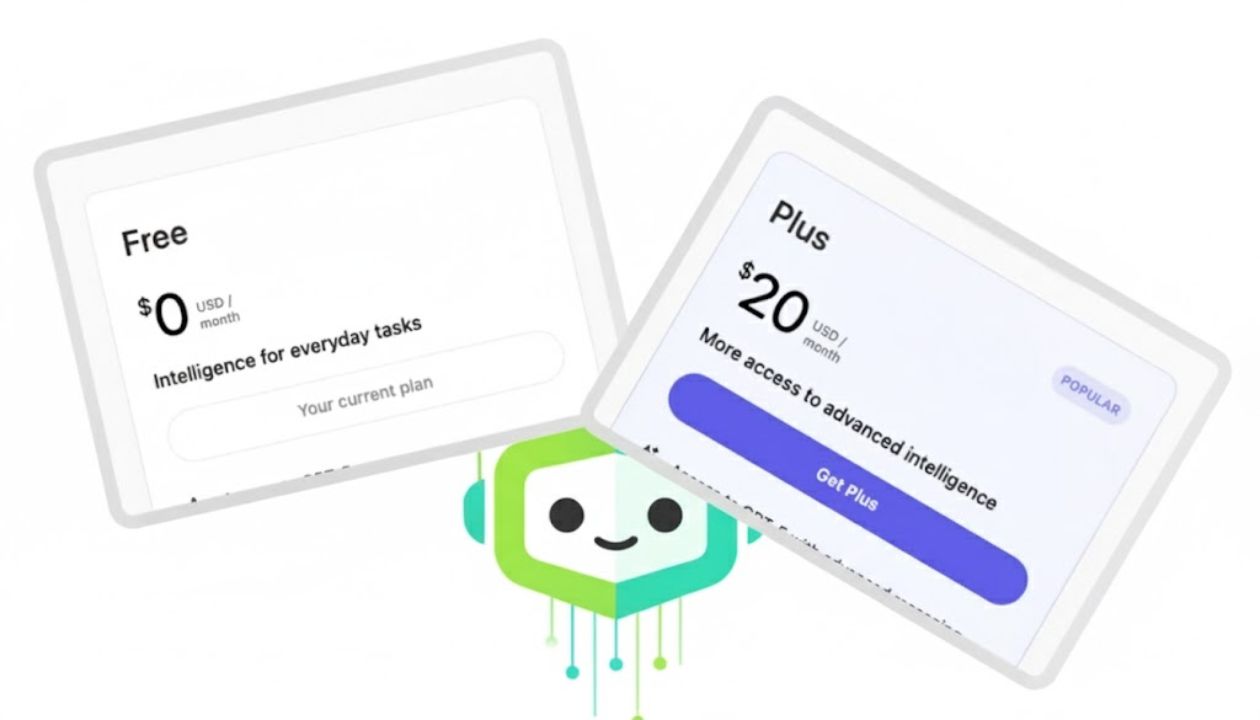It’s the biggest paradox in tech today: millions use ChatGPT daily without paying a single rupee or dollar — yet OpenAI aims to build a multi-billion-dollar business around it. How can a platform that offers so much for free convince people to pay?
The question cuts to the heart of the modern AI economy — balancing accessibility with profitability. Let’s unpack how OpenAI’s model really works, the challenges it faces, and whether users will ever be willing to open their wallets.
The Scale Problem: Billions of Queries, Millions of Free Users
ChatGPT has become one of the fastest-growing products in history. Its user base runs into hundreds of millions, but only a tiny fraction pays for premium plans like ChatGPT Plus or enterprise solutions.
Free users enjoy most of the core benefits — generating text, ideas, summaries, or images — while premium users get extras such as faster speed, better accuracy, and access to advanced models. The problem? The difference isn’t always dramatic enough to justify a monthly subscription for most casual users.
So while the free tier drives huge engagement and visibility, it also puts immense strain on OpenAI’s infrastructure without guaranteeing proportional revenue. The question remains: can that free audience be monetized effectively?
The Economics of AI: High Cost, Tight Margins
Running large AI models like GPT-4 or GPT-5 isn’t cheap. Every query consumes computing power, energy, and cloud infrastructure. The costs are so high that even a modest increase in user activity can translate to millions in monthly expenses.
OpenAI spends heavily on:
- Cloud infrastructure for processing queries
- Training costs for upgrading and fine-tuning models
- Talent in AI research, engineering, and safety teams
- Energy and data storage, both of which scale exponentially
Even with strong revenue from subscriptions, enterprise clients, and API usage, the costs often outweigh income. It’s a high-risk, high-investment model — one that depends on turning a portion of the massive free user base into steady revenue streams.
Why Converting Free Users Is So Difficult
Turning free users into paying subscribers is the hardest challenge in the digital world. And in ChatGPT’s case, it’s even tougher.
Here’s why:
1. The Free Tier Is Too Good
The free version already handles most users’ daily needs — from writing posts and essays to planning tasks. Unless they hit a speed or limit barrier, there’s little reason to upgrade.
2. People Expect AI to Be Free
The culture of “free apps” has made people resistant to subscriptions unless they gain massive value. Paying for something that feels limitless in its free form can be a hard sell.
3. Fierce Competition
Users can switch between platforms like Gemini, Claude, or open-source models within seconds. Unless ChatGPT’s paid features clearly stand out, many won’t stick.
4. Limited Perceived Value
For professionals, time savings and better accuracy matter. For casual users, faster responses may not justify monthly costs.
In short, the upgrade gap feels too narrow — and narrowing that gap without alienating free users is OpenAI’s tightrope walk.
How OpenAI Plans to Make Money Anyway
Even if only a small percentage of users pay directly, OpenAI is exploring multiple ways to build a sustainable ecosystem around ChatGPT.
1. Tiered Subscriptions
Beyond ChatGPT Plus, OpenAI is likely to introduce new tiers — for professionals, developers, or teams. Each tier could unlock specialized features such as deeper memory, personalized agents, or advanced analytics.
2. Enterprise and API Licensing
Businesses already pay to integrate OpenAI’s models into their systems — powering chatbots, support tools, and internal automations. This steady, large-volume usage can be more predictable and profitable than consumer subscriptions.
3. AI Agents and Automation
A major future revenue pillar lies in AI “agents” — tools that can perform tasks for you like booking flights, managing calendars, or drafting documents. These productivity-focused upgrades can attract both business and premium individual users.
4. Subtle Advertising or Affiliate Partnerships
While direct ads may ruin the user experience, AI-powered recommendations or affiliate integrations (for products, learning tools, or services) could create passive monetization without disrupting conversations.
5. Developer Ecosystem
By allowing third-party plugins, extensions, or model integrations, OpenAI could earn revenue shares from developers building tools within ChatGPT’s ecosystem — similar to app store economics.
The Future of Paying Users: Can It Scale?
Let’s say 10% of 500 million global users decide to pay — that’s 50 million subscribers. Even at modest pricing, this could create billions in recurring annual revenue.
But for that to happen, OpenAI must prove tangible daily value. The focus will shift from novelty to necessity — making ChatGPT indispensable for learning, business, coding, research, or creative work.
Future success will depend on:
- Making AI a daily-use productivity tool
- Continuously improving quality and reliability
- Building user loyalty through personalization
- Offering clear advantages to premium users
If AI agents, creative tools, and memory features evolve as promised, the paid tiers could become as normal as paying for cloud storage or streaming.
Sustainability: The Balancing Act
OpenAI’s biggest test lies in balancing accessibility and profitability. Offering AI for free builds reach and brand dominance, but running it sustainably requires steady revenue inflow.
In the long run, the model can survive if:
- Infrastructure costs drop through better optimization
- Paying users increase steadily year-over-year
- Businesses adopt enterprise plans at scale
- New services like AI agents bring recurring income
If any of these fail, OpenAI may be forced to limit free access, raise prices, or adopt ad-based models — changes that could alter how millions interact with ChatGPT daily.
Frequently Asked Questions (FAQs)
Q1. Why would anyone pay for ChatGPT if it’s free?
Paid versions offer faster performance, priority access during peak hours, more advanced models, and better memory. For professionals, the productivity boost is worth it.
Q2. Is OpenAI profitable yet?
Not yet. Running advanced AI models is costly, but revenue from subscriptions, API clients, and enterprise solutions continues to grow fast.
Q3. Will the free version disappear?
Unlikely, but it may become more limited over time. The free tier acts as a funnel to attract new users and build brand awareness.
Q4. Could ads appear in ChatGPT?
Possibly, though likely in subtle, AI-driven formats rather than traditional banners — such as product suggestions or contextual recommendations.
Q5. What’s the long-term vision for monetization?
OpenAI aims to create an ecosystem where individuals, developers, and enterprises use AI daily — paying either through subscriptions, automation agents, or API integration.
Q6. What if open-source AI becomes just as good?
That’s a real risk. OpenAI will need to maintain its edge through innovation, reliability, and ecosystem value to justify its pricing.
Final Thoughts
ChatGPT’s free access built its empire — but the future depends on how well OpenAI can turn that audience into loyal, paying users.
The company’s challenge isn’t just technological; it’s psychological. It must make people feel that paying for ChatGPT means upgrading their work, creativity, and productivity — not just buying faster answers.
In the next few years, we’ll see whether this bold balance of “free for all” and “pay for power” becomes the new standard for AI platforms — or a cautionary tale in digital economics.
In the end, the real question isn’t whether people can use ChatGPT for free — it’s whether they’ll value it enough to pay.

